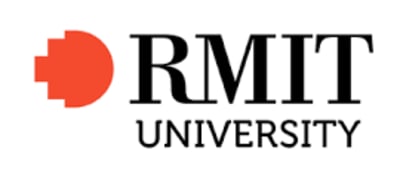
Master of Landscape Architecture
RMIT - Royal Melbourne Institute of Technology

Key Information
Campus location
Melbourne, Australia
Languages
English
Study format
On-Campus
Duration
2 years
Pace
Full time
Tuition fees
AUD 32,640 *
Application deadline
Request info
Earliest start date
Request info
* Full-fee places: AU$32,640 / Commonwealth supported places (CSP) range from AU$6,566 to AU$10,958.
Scholarships
Explore scholarship opportunities to help fund your studies
Introduction
Coronavirus (COVID-19) update: Learn online now and on campus later.
At RMIT we don’t want our students to miss out on a semester or a year of study if we can help it. We have updated hundreds of courses with online enabled learning options while not compromising on the quality of education and student outcomes. Find out how we’re helping you continue to go to uni during COVID-19 with our online enabled study.
Landscape architecture is a design discipline that works across a range of creative ideas, living systems, physical materials and future possibilities. It is about envisioning, investigating and proposing better ways of living in a complex and rapidly changing world.
RMIT offers a distinguished professional education, the Master of Landscape Architecture program is accredited by the Australian Institute of Landscape Architects (AILA). The program is recognised as a world-class facility in fostering design knowledge, critical thinking, and design advocacy through innovative teaching and research.
RMIT’s Master of Landscape Architecture will equip you to become a leader and innovator in Landscape Architectural practice.
Design Research is at its core
Design research projects are undertaken within this program sit at a contemporary and international level. Design Research enables you to engage profoundly with the discipline of Landscape Architecture. You will investigate issues and topics that are relevant to contemporary issues in urban and natural contexts increasingly affected by climate change, natural disasters and misappropriation of land.
Study in RMIT’s unique design studios
You’ll learn through design studios which operate as laboratories conducive to experimentation, investigation, and the exploration of design as an agent that responds to issues in the built environment of contemporary society. Studios are led by distinguished local and international academic practitioners drawing from a diverse field of knowledge and experience.
Top 3 reasons to be part of RMIT Landscape Architecture
- Learn through design studios, which model the best-practice of industry
- Open up employment opportunities and develop industry contacts
- Be immersed in an urban design laboratory in Australia’s design capital.
Details
How you will learn
It’s all centred around learning through design studios
The program's celebrated design studios are situated within an urban campus which means you will be immersed a laboratory of design exploration and at the centre of innovation.
Studios are located across the city campus and within the multi-award-winning RMIT Design Hub. Design studios are one of the major reasons that RMIT Landscape Architecture and its graduates are so highly regarded by industry.
What is a Design Studio?
Design Studios model the best practice of local and global design firms.
Design studio typically makes up half the program each semester and is taught in small groups. You will focus on a particular design theme and project each semester. You’ll select from a range of studio offerings and learn specific design techniques to develop ideas and outcomes in relation to a project brief. Studios are vertically integrated, i.e. grouped with students from various year levels.
In your final year, you will complete a design thesis of your choice which is referred to as Design Research Project A+B. This project will develop on the research outcomes reached the conclusion of your landscape architecture studies.
Industry connections
Acclaimed and award-winning international and Australian landscape architects, architects, urban designers and experts in related fields are consistently involved with the teaching and research projects undertaken within this program.
Design studios provide strong engagement with industry. Some projects may involve clients or actual projects where you will develop your design proposals within a scenario-based, simulated design practice environment. Professional designers may also form part of your review panel at the end of the semester.
Public lectures are also held throughout the year, led by prominent local and international landscape architects and urban designers.
RMIT University is committed to providing you with an education that strongly links formal learning with professional or vocational practice.
International opportunities
- Study Tours
A range of design studios offers travelling opportunities overseas to engage in fieldwork, workshops and design projects. Previous locations include Japan, Vietnam, Taiwan, France, Spain and Africa. - Exchange
International exchange options are available to Universities in Germany, Denmark, the Netherlands, the United Kingdom and the USA.
RMIT’s Global Mobility Office supports students to undertake an exchange or short-term mobility activity with over 165 partner universities worldwide. - Internships
Internship placements are offered to students in the Master of Landscape Architecture each year, allowing students to gain work experiences at acclaimed and award-winning practices overseas. Current internship partners include Stoss LU in Boston and EMF in Spain.
Electives and program structure
Within the program, you have an opportunity to select from a range of University-wide electives to expand your knowledge and skills relevant to your future careers.
Career
This program will prepare you for the professional practice of landscape architecture. Working independently or as part of a large multidisciplinary team. From urban design projects (plazas and pedestrian precincts) to working with large open spaces (parks and nature reserves), the parameters of projects are broad
As a landscape architect, you will find career opportunities in:
- the design offices of landscape architects, architects, planners, urban designers and engineers throughout Australia.
- government organisations at federal, state and municipal levels.
- Graduates may also become involved in smaller projects such as private gardens, historic estates and productive landscapes.
Admissions
You must have successfully completed an Australian bachelor degree (or equivalent overseas qualification) in architecture or landscape architecture or a related design field.
You will be selected competitively based on your grades and folio.
Selection tasks
You must:
- Complete and submit the online pre-selection kit by 10 November. Submissions may be considered after this date if places are available. The link to submit your pre-selection kit will appear on the applicant dashboard after you have submitted your application.
- Attend an interview (some applicants).
Pre-selection kit
The pre-selection kit requires:
- A statement outlining why you wish to study this program, and your current research goals.
You may also wish to include details about why you want to pursue a career in design and how your work experience has informed your research interests.
Maximum 150 words. - A statement outlining your academic achievements and professional experience, including any work experience you are currently undertaking.
Maximum 300 words. - A folio containing pieces from your undergraduate studies and, if available, professional projects.
Your folio should be a package of images, drawings, sketches, paintings, models, photographs, computer work, etc. of personal creative/design projects; should include concepts/ideas that lead to the final design piece.
You must collate your work into a single PDF (maximum 30 pages).
You may upload your PDF (maximum 10MB) or supply a URL if it's hosted online.
Other information
If you successfully complete RMIT's Bachelor of Landscape Architecture (BP256) with a Grade Point Average (GPA) of 2.5 or more you are guaranteed entry into this program.
Fees
Entry for this program is primarily through Commonwealth Supported Places (CSPs).
Government financial assistance is available to eligible students regardless of the type of place you enrol in.
2019 indicative fees
- Commonwealth supported places (CSP) range from AU$6,566 to AU$10,958*
- Full-fee places: AU$32,640*
*Amounts quoted are indicative fees per annum, and are based on a standard year of full-time study (96 credit points). A proportionate fee applies for more or less than the full-time study load.
Additional expenses
- Student services and amenities fee (SSAF): AU$303 maximum fee for 2019.
- Other items related to your program, including field trips, textbooks and equipment.
Fees are adjusted on an annual basis and these fees should only be used as a guide.
Scholarships
RMIT awards more than 2000 scholarships every year to recognise academic achievement and assist students from a variety of backgrounds.